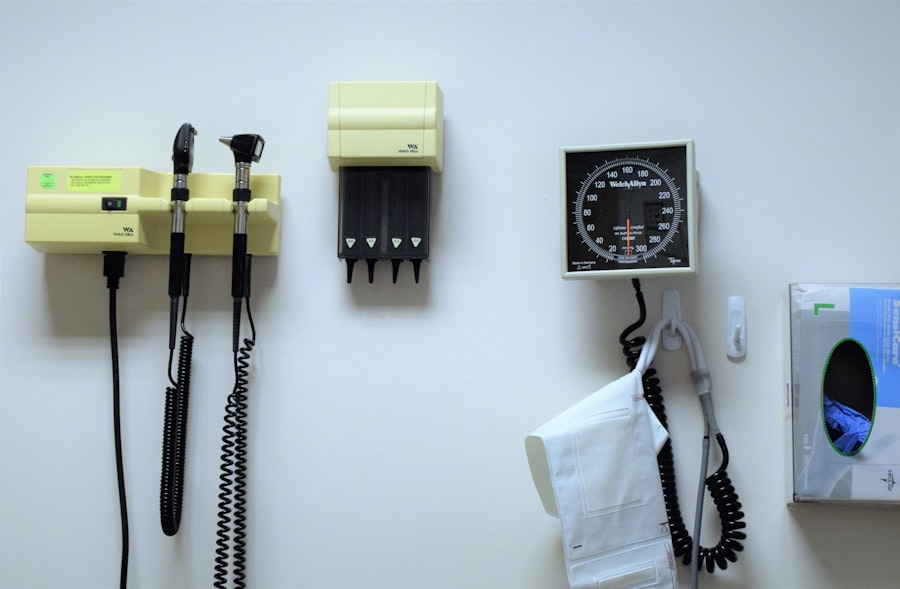Clinical trials are a cornerstone of medical research, providing the necessary framework to evaluate the safety and efficacy of new treatments, drugs, and medical devices. As the complexity of clinical trials has increased, so too has the need for robust systems to manage the myriad of processes involved. A Clinical Trials Management System (CTMS) is designed to streamline the planning, tracking, and management of clinical trials, ensuring that they are conducted efficiently and in compliance with regulatory standards.
These systems serve as a centralized platform for managing trial data, participant information, and operational workflows, ultimately enhancing the quality of research outcomes. The evolution of clinical trials has been marked by advancements in technology and an increasing emphasis on data integrity and patient safety. A CTMS plays a pivotal role in this landscape by providing researchers with tools to monitor trial progress in real-time, manage resources effectively, and facilitate communication among stakeholders.
With the growing complexity of clinical trials, including multi-site studies and diverse patient populations, the implementation of a CTMS has become not just beneficial but essential for successful trial management.
Key Takeaways
- Clinical Trials Management Systems (CTMS) improve efficiency and organization in clinical research.
- Key features include data tracking, regulatory compliance, and quality assurance tools.
- Integration with EDC and EHR systems streamlines data collection and analysis.
- CTMS enhances collaboration and communication among all trial stakeholders.
- Emerging trends focus on advanced technologies and innovations to optimize trial management.
Benefits of Implementing a Clinical Trials Management System
The implementation of a Clinical Trials Management System offers numerous advantages that can significantly enhance the efficiency and effectiveness of clinical research. One of the primary benefits is improved data management. A CTMS centralizes all trial-related data, allowing researchers to access critical information quickly and easily.
This centralized approach reduces the risk of data loss or discrepancies that can arise from using disparate systems or manual processes. By having a single source of truth, researchers can make informed decisions based on accurate and up-to-date information. Another significant benefit is the enhancement of operational efficiency.
A CTMS automates many routine tasks associated with trial management, such as participant recruitment, scheduling, and monitoring. This automation not only saves time but also reduces the likelihood of human error. For instance, automated reminders can be sent to participants regarding upcoming visits or required assessments, ensuring higher retention rates and compliance with study protocols.
Additionally, the system can generate reports and analytics that provide insights into trial performance, enabling teams to identify bottlenecks and optimize processes proactively.
Key Features and Functions of a Clinical Trials Management System

A comprehensive Clinical Trials Management System encompasses a variety of features designed to support the diverse needs of clinical research. One of the key functions is study planning and protocol management. This feature allows researchers to design and document study protocols, including objectives, methodologies, and timelines.
By having a structured approach to protocol management, teams can ensure that all aspects of the trial are aligned with regulatory requirements and best practices. Another essential feature is subject management, which includes tools for tracking participant enrollment, eligibility screening, and retention. A CTMS can facilitate the recruitment process by providing tools for identifying potential participants based on predefined criteria.
Once enrolled, the system can monitor participant progress throughout the trial, capturing vital data such as visit compliance and adverse events. This level of oversight is crucial for maintaining participant safety and ensuring that data collected is both reliable and valid.
Streamlining Data Collection and Analysis with a Clinical Trials Management System
| Metric | Description | Before CTMS Implementation | After CTMS Implementation | Improvement |
|---|---|---|---|---|
| Data Entry Time | Average time taken to enter clinical trial data | 120 minutes per patient | 45 minutes per patient | 62.5% reduction |
| Data Accuracy | Percentage of data entries without errors | 85% | 98% | 13% increase |
| Query Resolution Time | Average time to resolve data queries | 10 days | 3 days | 70% faster |
| Data Accessibility | Time to access trial data for analysis | 5 days | Same day | 100% improvement |
| Report Generation Time | Time to generate trial progress and analysis reports | 7 days | 1 day | 85.7% reduction |
| Compliance Rate | Adherence to regulatory and protocol requirements | 90% | 99% | 9% increase |
Data collection is a critical component of any clinical trial, as it directly impacts the validity of study results. A Clinical Trials Management System streamlines this process by providing electronic data capture (EDC) capabilities that allow researchers to collect data in real-time from various sources. This can include direct input from clinical sites, patient-reported outcomes, and laboratory results.
By digitizing data collection, researchers can minimize errors associated with manual entry and ensure that data is captured consistently across all sites. Moreover, a CTMS enhances data analysis by integrating advanced analytics tools that allow researchers to visualize trends and patterns within their data. For example, built-in dashboards can provide insights into participant demographics, treatment responses, and adverse events in real-time.
This capability enables teams to make data-driven decisions throughout the trial lifecycle, such as adjusting recruitment strategies or modifying study protocols based on interim findings. The ability to analyze data quickly not only accelerates the research process but also enhances the overall quality of the study.
Ensuring Regulatory Compliance and Quality Assurance with a Clinical Trials Management System
Regulatory compliance is paramount in clinical research, as it ensures that trials are conducted ethically and that participant safety is prioritized. A Clinical Trials Management System aids in maintaining compliance with various regulatory bodies such as the FDA or EMA by providing tools for documentation and audit trails. These systems can automatically generate essential documents required for regulatory submissions, including informed consent forms and study reports, ensuring that all necessary information is readily available for review.
Quality assurance is another critical aspect supported by a CTMS. The system can implement standardized processes for monitoring trial activities, including site visits and data verification procedures. By establishing these protocols within the CTMS, organizations can ensure that all sites adhere to Good Clinical Practice (GCP) guidelines.
Additionally, built-in quality control measures can flag discrepancies or anomalies in data entry, prompting immediate investigation and resolution. This proactive approach to quality assurance not only safeguards participant welfare but also enhances the credibility of study findings.
Integrating Electronic Data Capture (EDC) and Electronic Health Records (EHR) with a Clinical Trials Management System

The integration of Electronic Data Capture (EDC) systems with Clinical Trials Management Systems represents a significant advancement in clinical research technology. EDC systems facilitate the collection of clinical trial data electronically at the site level, allowing for real-time access to information while reducing reliance on paper-based methods. When integrated with a CTMS, EDC systems enable seamless data flow between trial management processes and data collection efforts.
Furthermore, integrating Electronic Health Records (EHR) with a CTMS enhances the richness of data available for clinical trials. EHRs contain comprehensive patient information that can be invaluable for identifying eligible participants and understanding their medical histories. By linking EHRs with a CTMS, researchers can streamline participant recruitment processes while ensuring that they have access to relevant health data throughout the trial.
This integration not only improves efficiency but also enhances patient safety by allowing researchers to monitor potential contraindications or adverse reactions based on participants’ medical backgrounds.
Enhancing Collaboration and Communication Among Clinical Trial Stakeholders with a Management System
Effective collaboration among stakeholders is essential for the success of any clinical trial. A Clinical Trials Management System fosters communication between various parties involved in the research process, including sponsors, investigators, site staff, and regulatory authorities. By providing a centralized platform for sharing information, a CTMS ensures that all stakeholders are aligned on study objectives and progress.
For instance, a CTMS can facilitate real-time updates on trial status through dashboards accessible to all stakeholders. This transparency allows sponsors to monitor site performance while enabling investigators to communicate challenges or successes promptly. Additionally, built-in messaging features within a CTMS can streamline communication regarding participant issues or protocol amendments, reducing delays caused by miscommunication or lack of information sharing.
Enhanced collaboration ultimately leads to more efficient trial execution and improved outcomes.
Future Trends and Innovations in Clinical Trials Management Systems
As technology continues to evolve, so too will Clinical Trials Management Systems. One emerging trend is the incorporation of artificial intelligence (AI) and machine learning algorithms into CTMS platforms. These technologies have the potential to revolutionize how clinical trials are designed and managed by providing predictive analytics that can identify potential challenges before they arise.
For example, AI could analyze historical trial data to forecast recruitment rates or identify sites that are likely to perform well based on past performance metrics. Another innovation on the horizon is the increased use of decentralized clinical trials (DCTs), which leverage telemedicine and remote monitoring technologies to conduct trials outside traditional clinical settings. A CTMS designed with DCT capabilities will need to accommodate remote data collection methods while ensuring compliance with regulatory standards.
This shift towards decentralized approaches not only enhances patient accessibility but also allows for more diverse participant populations, ultimately leading to more generalizable study results. In conclusion, as clinical trials become increasingly complex and multifaceted, the role of Clinical Trials Management Systems will continue to expand. By embracing technological advancements and fostering collaboration among stakeholders, these systems will play an integral part in shaping the future of clinical research.




